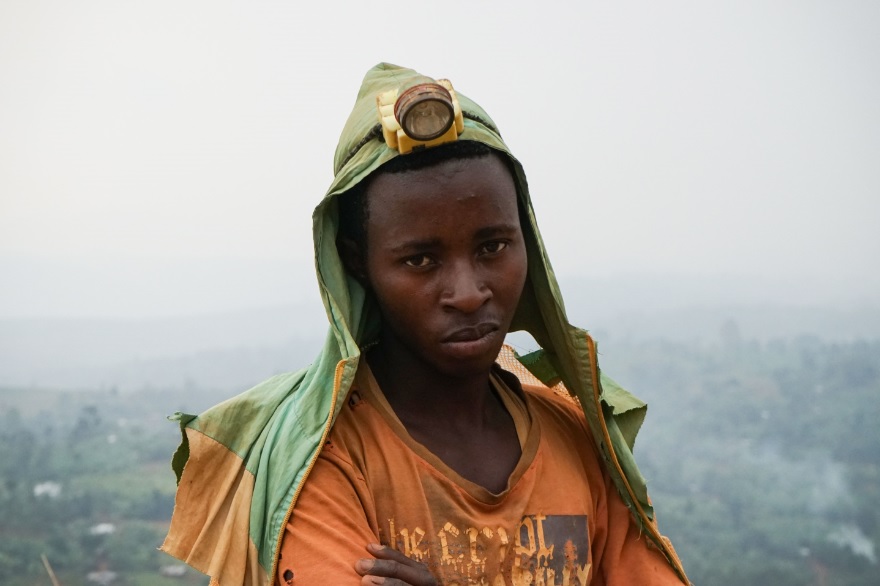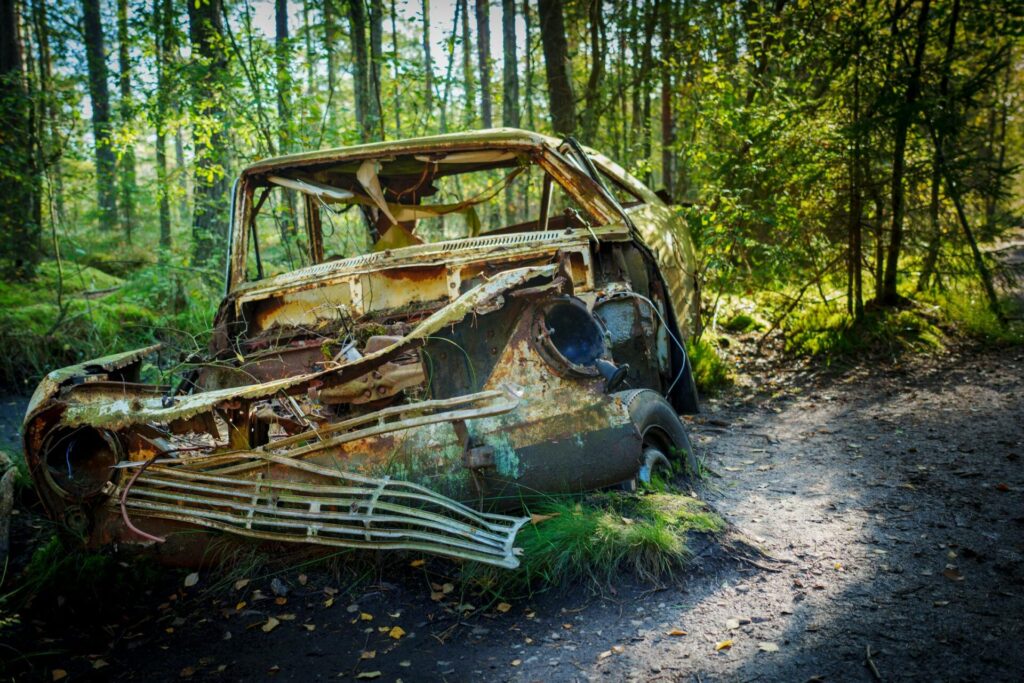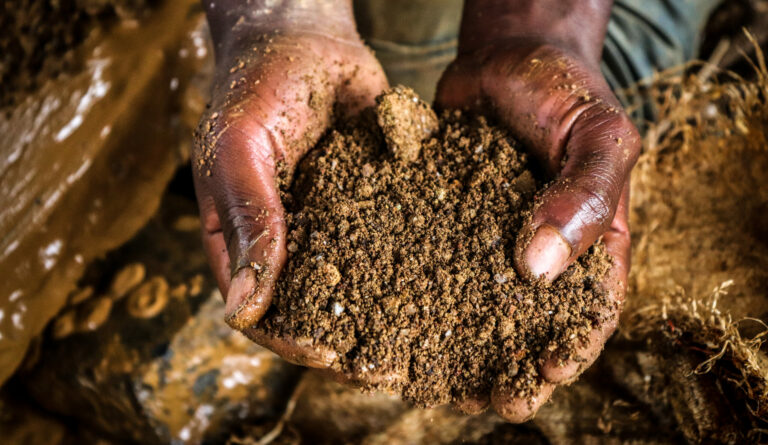WARNING: unbalanced footnote start tag short code found.
If this warning is irrelevant, please disable the syntax validation feature in the dashboard under General settings > Footnote start and end short codes > Check for balanced shortcodes.
Unbalanced start tag short code found before:
“ONU, Déclarations de M. ANTÓNIO GUTERRES, Secrétaire général de l’ONU, “Causes profondes des conflits – le rôle des ressources naturelles” (S/2018/901] . Concrètement, comment les choses se passent-elles ? L’enrichissement des groupes armés est principalement tiré d…”
“L’exportation de minerais accroît en général le risque de guerre (…) car elle permet le financement
des groupes rebelles, engendre l’aggravation de la corruption de l’administration, réveille le sentiment sécessionniste et fragilise la population autochtone “.

The DR Congo has been experiencing an armed conflict for more than 20 years which has already caused millions of deaths. Although it is not the only factor, the presence of numerous natural resources contributes to the continuation of violence. How to understand this phenomenon?
If we cannot establish an automatic causal link between the presence of resources and the emergence of conflict, the presence of the latter nevertheless tends to significantly increase the risk of tension and therefore of potential conflict.
The presence of natural resources increases the risk of conflict to the extent that they are synonymous with enrichment for the people who exploit them. The value of mineral resources on the global market, combined with their limited availability and sometimes difficult accessibility, gives them significant value. Their simple presence will therefore arouse desire and very often exacerbate tensions between the different actors who will want to control their exploitation and appropriate them in order to benefit from them.
Competition between actors can be calmly regulated by a fair distribution system, or thanks to a fair and efficient legislative system. However, as is the case for example in DR Congo, the system does not always make it possible to peacefully regulate the competitive interests between the actors present. This is where conflicts appear.
Ces derniers peuvent émerger pour plusieurs raisons [[Hugon P. (2009), dans OCP Policy Center, Policy Brief, “Ressources naturelles et réalités géopolitiques de l’Afrique”, Mai 2017]] :
- Inequitable distribution of resource revenues, corruption or mismanagement; the feeling of injustice that can be fueled by these dynamics creates, fuels or exacerbates tensions between stakeholders. Furthermore, these tensions can fuel other divisions (ethnic or religious for example).
- Border, land or maritime disputes with a neighboring country regarding sovereignty over the area where the resources are located;
- Separatist desires for regions rich in resources; Ex: Katanga or Kasaï in DR Congo, two regions rich in minerals and which have experienced separatist episodes in the past.
The conflicts that can emerge are of different orders: they can be armed conflicts (war between countries, civil war, etc.) and/or social conflicts (social protest via the mobilization of trade union, peasant, human rights defense movements). …).
THE armed conflicts are put in place when a group wants to appropriate the financial benefits of the exploitation of resources. THE social conflicts can appear when a population is ignored during the implementation of an extractive project or when the negative impacts of exploitation lead the population to express their grievances and demand respect for their rights from the actors they deem responsible . If the population has the impression that their grievances and demands are not listened to, social protest can harden and turn into violent social conflict. These mobilizations sometimes lead to repression by the armed forces of the State or even businesses.
Si la présence de ressources augmente le risque de déclenchement des conflits, elle influence également leur intensité, durée et peut contribuer à la reprise de certains conflits pacifiés [[Groupe inter-agences des Nations Unies pour les actions préventives, “Guide pratique pour la prévention et la gestion des conflits liés à la terre et aux ressources naturelles – Industries extractives et conflits”, 2012]].
Actors who have control over the exploitation of resources benefit from significant revenues. This money can make it possible to purchase weapons to continue to establish their power, their authority and thus maintain control over resources.
Financing mechanisms :
In the case of a belligerent group in a weak position, taking possession of the resources where it is located allows it to obtain new financing and equip itself. This strengthens his position and reduces the need to negotiate. This new influx of resources for the weaker group may allow it to continue hostilities and potentially make the conflict longer. Conversely, if this provision of natural resources benefits a group in a position of strength in the conflict, strengthening its means of combat can allow it a direct victory and end the conflict. Which makes conflicts potentially shorter.
Greed Mechanism :
Natural resources can provide financial motivation to combatants and encourage them to oppose peace agreements, which influences the duration of the conflict by making it longer. Indeed, enrichment takes precedence over the political and/or military objectives which may have been at the origin of the outbreak of the conflict. This mechanism is at the heart of the dynamics of the conflict currently at work in eastern DR Congo. Conversely, if peace seems more profitable to the different warring groups, it is possible that the combatants will seek to negotiate peace, making the conflict shorter.
The appropriation mechanism:
If the belligerents are in a logic of appropriation of resources, the more the disputed territory contains and/or the more these resources have a significant economic value, the greater the desire to appropriate them is among all the belligerents. Which tends to increase the number of victims. In the case of territories with fewer and/or less valuable resources, the negative ratio between the costs of war and what it could bring may be enough to encourage opponents to reach an agreement.
The cooperation mechanism:
It may also appear to the belligerents that cooperation for sharing the benefits of the exploitation of natural resources between them represents a lower cost than waging war (they pillage together). Cooperation tends to reduce the number of victims. As we will see later, this mechanism is also at work in the case of the conflict in eastern DR Congo.
In DR Congo the link between the exploitation of resources and the presence of conflict is particularly evident. The presence of resources fuels a silent conflict that has destabilized the Great Lakes region for many years. If access to Congolese natural resources does not appear to be the main reason for the outbreak of the conflict in 1996, it is today clearly one of the central elements on which the strategy of the actors has been based for almost 20 years. in the presence.
À l’Est de la RD Congo, l’exploitation a un impact à la fois sur la durée et l’intensité du conflit. Impact sur la durée parce qu’en effet, si le commerce illégal des minerais rapporte si gros, c’est parce qu’il se nourrit du cocktail “instabilité-insécurité-impunité”. L’absence de contrôle permet à certains groupes armés de se financer, mais permet surtout l’enrichissement personnel de quelques officiers et autres individus haut placés dans la hiérarchie des groupes armés. Ils sont entre 70 et 120 à évoluer à l’Est de la RD Congo.
Les pays voisins du géant congolais, pour la plupart impliqués dans les trafics, bénéficient aussi largement de cette situation. Cette recherche continue d’enrichissement conduit inévitablement à une stratégie d’alimentation des conflits. Le Programme des Nations Unies pour l’Environnement (PNUE) estime que l’exploitation illégale des ressources en RD Congo (or, bois, ivoire et minerais) rapporterait jusqu’à 1,3 milliard de dollars par an. Le trafic d’or à lui seul générerait annuellement près de 120 millions de dollars. Ces revenus ne reviennent pas intégralement aux groupes armés, mais bénéficient également à des groupes criminels internationaux – notamment abrités par les pays voisins [[ONU, Déclarations de M. ANTÓNIO GUTERRES, Secrétaire général de l’ONU, “Causes profondes des conflits – le rôle des ressources naturelles” (S/2018/901] .
L’enrichissement des groupes armés est principalement tiré de la commercialisation des minerais, plutôt que de l’exploitation artisanale en tant que telle. Néanmoins, il arrive qu’un groupe armé prenne directement le contrôle d’une mine artisanale pour l’exploiter pendant quelques jours, soit en envoyant ses propres soldats extraire le minerai dans les puits, soit en obligeant des civils à le faire pour lui. Cette pratique reste toutefois isolée, et principalement liée aux agissements de certaines unités particulièrement peu scrupuleuses des FARDC [[ Les principaux hommes en armes recensés dans les mines sont des FARDC (66% des sites miniers affectés entre 2016 et 2018 le sont par des militaires officiels). Source : IPIS, [[Ibid]] “Cartographie des zones minières artisanales et des chaînes d’approvisionnement en minerais dans l’est de la RDC. Impact des interférences des groupes armés et des initiatives d’approvisionnement responsables”, Mai 2019]], car les hommes en armes se limitent généralement à contrôler les abords des sites et à racketter les creuseurs et les négociants de minerais le long des routes commerciales qu’ils contrôlent (prélèvement de taxes en minerais où en espèces). La présence dans les sites miniers ne représente plus qu’une source de financement parmi d’autres. Comme le souligne IPIS , le commerce illicite se poursuit mais les stratégies de taxation ont été révisées. Aujourd’hui les revenus sont surtout récoltés par la tenue de barrages routiers et de la taxation d’autres ressources (notamment le bois) [[Sur ce thème voir notamment : IPIS, “Tout ce qui bouge sera taxé : l’économie politique des barrières routières au Nord et Sud Kivu”, Novembre 2017]]. Il est fréquent que des entreprises paient des taxes à des groupes rebelles pour pouvoir utiliser les routes et acheminer sans trouble leurs marchandises. En échange du paiement de ces “taxes”, les rebelles ou militaires assurent la sécurité des convois de l’entreprise. Qu’en est-il de l’intensité des combats ? Elle est relativement faible en RDC. La coopération commerciale entre les différents groupes pour le trafic de minerais prime souvent sur la logique de l’affrontement militaire. En effet, les périodes d’affrontement direct sont relativement brèves – même à l’Est du pays – et suivies de périodes plus longues d’accalmie, permettant ainsi à la coopération commerciale de se réorganiser. Par ailleurs, la raison première de la plupart des attaques menées par un groupe armé contre un autre est de s’approprier l’accès aux mines et/ ou aux routes commerciales des minerais, plutôt qu’une réelle divergence politique ou idéologique entre eux.
The first victims of these conflicts are the local populations who suffer from the strategies of violence and terror of armed men. The latter practice looting, murder, kidnapping and also rape to establish their domination. The displaced people number in the tens of thousands.
Conflicts and violence (including sexual violence) are fueling widespread chaos in the region. This permanent disorder allows different belligerents to continue to enrich themselves through the exploitation of resources. Indeed, if order reigned, it would be more difficult to extract and export minerals illegally, to avoid paying taxes and this would lead to a reduction in profits. This chaos has the direct consequence of not allowing the population and the State – as an institution – to benefit from the fallout from mineral wealth. Many actors present (rebel groups, FARDC, political leaders, businessmen/women and multinationals or even neighboring countries) therefore have a major direct interest in perpetuating this crisis.
It is important to emphasize, however, that resources are often not the only explanation that can be given to conflicts. Conflicts are multifactorial. This is also observed in South Kivu where the conflict, of rare complexity, combines geostrategic, economic, but also political and ethnic issues. Furthermore, the conflict has strictly Congolese components, an important regional dimension (notably with Rwanda and Uganda), but also international (because of the numerous foreign actors present: large companies and States). The complexity of the situation makes conflict resolution difficult.
“Les études menées par l’ONU montrent que plus de 40% des conflits armés internes de ces 60 dernières années ont été liés aux ressources naturelles. Les impacts croissants des changements climatiques étant une évidence dans toutes les régions du monde, les risques ne feront que croître” a récemment mis en garde le Secrétaire Général de l’ONU, M. António Guterres [[ONU, Déclarations de M. ANTÓNIO GUTERRES, Secrétaire général de l’ONU, “Causes profondes des conflits – le rôle des ressources naturelles” (S/2018/901).]].
Climate change and increasing pressure on the planet's natural resources are increasing the risks of conflict in the world. The consumption of resources in industrialized countries, particularly mining, is increasing without taking into account the realities in producing countries. Reserves of some resources are concentrated in a small number of countries, such as coltan and cobalt in DR Congo [[DR Congo has 60 to 80% of coltan reserves and 50 to 60% of global cobalt reserves.]], two minerals essential to our new technologies (smartphones, computers, etc.). Our thoughtless over-consumption of these resources will not contribute to easing tensions in DR Congo, quite the contrary. The European Union and Belgium should initiate a real reflection on their resource supply, both in terms of the long-term availability of these non-renewable resources and the socio-environmental impacts of their exploitation in producing countries. Reducing our voracious appetite for resources and supporting the DR Congo in easing conflicts in the East could be a first step on the path towards peace.
Clara Debeve & Géraldine Duquenne.






